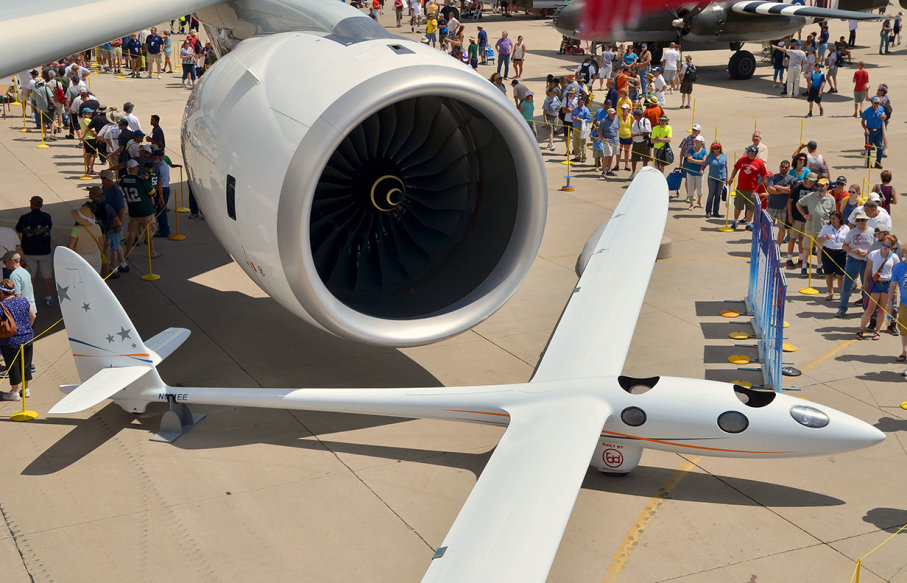Soon We Could Glide to the Edge of Space Without an Engine

We’ve all heard of the ozone layer in Earth’s atmosphere. But actually going to study it, where the air is too thin for a conventional aircraft, is another thing.
Next summer a private research effort intends to achieve that goal by soaring more than 90,000 feet (27.4 kilometers) above South America in a super-light, state-of-the art glider called Perlan 2.
Perlan 2 will use an ingenious trick to get to where no manned, wing-borne aircraft has ever gone. After being towed and released by a conventional aircraft to 10,000 feet (3 kilometers), it will catch winds from the Pacific Ocean. These winds are being deflected by the Andes Mountains to create a mountain wave – basically, a moving wall of air with energetic updrafts that can rise 30 feet (9 meters) per second.
The mountain waves will carry the Perlan 2 halfway to the ozone layer, where it will switch over to riding the Antarctic’s polar vortex, a powerful cyclone of winds that swirls around the South Pole in the Southern Hemisphere’s winter. Once the aircraft gets that boost, it will soar even higher.
On Sept. 23, the Perlan 2 succeeded in its initial test flight, reaching an altitude of 5,000 feet (1524 meters) above the municipal airport in Redmond, Oregon.
The Perlan 2 glider is significantly smaller than commercial passenger aircraftAirbus/Perlan
According to a history of gliding, the idea of using waves of air moving over mountains actually dates back to the 1930s, when it was suggested by German glider pilot Wolf Hirth. In 1986, Robert R. Harris picked up a wave flowing over the Sierra Nevada mountains in central California and used it to reach 49,009 feet (15 kilometers) – where his oxygen equipment failed, forcing him to turn back.
In August 2006, businessman and adventurer Steve Fossett and NASA test pilot Einar Enevoldson broke Harris’s record, soaring 50,737 feet (15.46 kilometers) over the Andes in a glider called the Perlan. They could have gone even higher, but their pressure suits expanded so much inside the unpressurized cabin that the pilots couldn’t move the flight controls and safely maneuver the aircraft, so they decided to call it a day.
Fossett had a more ambitious vision – a glider with a pressurized cabin that could achieve even greater heights. But he died in a 2007 plane crash before his ambition could be achieved.
Enevoldson continued Fossett’s quest as chairman of the Perlan Project, a private-sector research outfit whose major funder is the aircraft manufacturer Airbus. Other backers include rocket scientist-turned-investment adviser Dennis Tito, who in 2001 became the world’s first space tourist by buying a spot on a Russian flight.
Information about the Perlan 2 glider.Airbus/Perlan
The $7.5 million, two-man Perlan 2 weighs 1,800 pounds (816 kilograms) – about the same as a Volkswagen Beetle – and has a wingspan of 84 feet (26 meters). At 90,000 feet, the Perlan 2 is designed to hit a top speed of 403 miles (649 kilometers) per hour. Because of the hazardous environment in which it will operate, where the air is Martian-thin and temperatures can drop to 70 degrees F below zero (56 degrees C below zero), the glider is equipped with an array of safety equipment, including a backup oxygen supply and a drogue parachute to allow rapid descent in case of an emergency. The glider is scheduled for launch in 2016.
Once aloft, the Perlan 2 can perform numerous types of atmospheric research. But one of its most important tasks will be taking air samples from the stratosphere. Scientists can analyze those to determine how successful the 1987 ban on chlorofluorocarbons (CFCs) has been on reducing depletion of the ozone layer, which is crucial to protecting life on Earth from harmful solar radiation.



 Creators of mankind
Creators of mankind Description of “Tall white aliens”
Description of “Tall white aliens” Where they came from?
Where they came from? About hostile civilizations
About hostile civilizations The war for the Earth
The war for the Earth “Tall white aliens” about eternal life
“Tall white aliens” about eternal life Video: “Nordic aliens”
Video: “Nordic aliens” Aliens
Aliens Alien encounters
Alien encounters The aliens base
The aliens base UFO
UFO Technology UFO
Technology UFO Underground civilization
Underground civilization Ancient alien artifacts
Ancient alien artifacts Military and UFO
Military and UFO Mysteries and hypotheses
Mysteries and hypotheses Scientific facts
Scientific facts


















